Did you know that DevOps can accomplish tasks in minutes, which used to take hours or even days of work? So the companies can focus more on their business or the product. And maybe that’s why industries adopting DevOps at such a rapid pace.
In the next few minutes, I will show you how thousands of companies are evolving and adopting a DevOps culture.
Hi, Welcome to my blog
Let me help you to understand what is DevOps and how it can solve some business-critical problems. But before that we need to understand what is software Development Life cycle Process.
Table of Contents
Scenario-based Story which makes you understand why SDLC came into the picture?
SDLC Phases
Software Development involves the following phases to make a complete software product-
1- Requirements
2-Planning
3-Designing Architects
4-Development
5-Maintenence

1- Requirements:- First phase requirements gathering and analysis information will be collected like product features.
Who are the users, how it will be used, some user requirements, the current state of the market, and few other things.
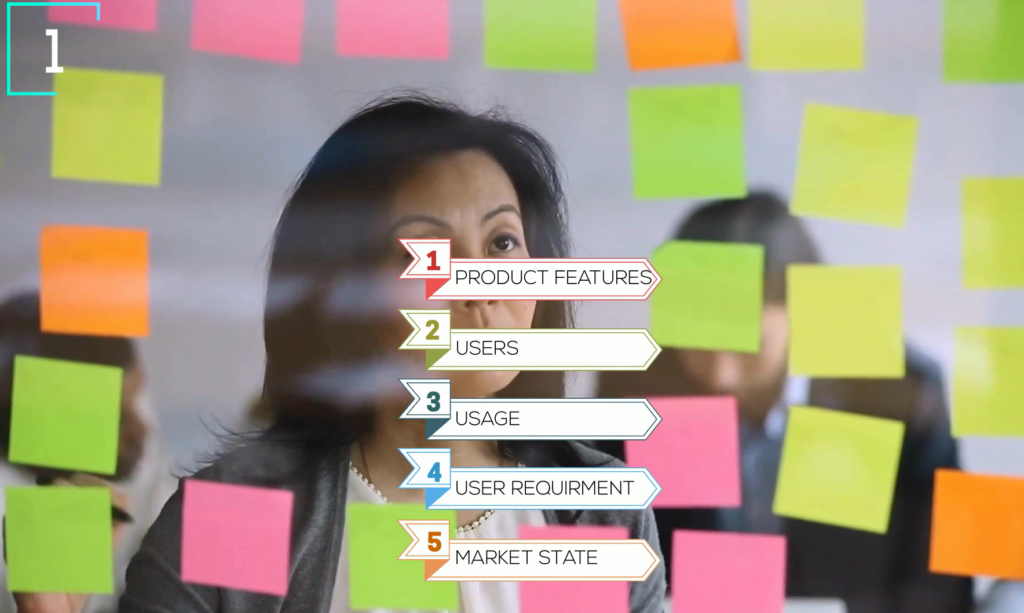
2-Planning:- The second phase is planning. What do we want? It determines the cost and resources required for the implementation of the product and also the risks associated with it.

3-Designing Architects:-Third phase Designing Architects will design the software based on the inputs from the previous phase.
Architects will produce design documents.
These will be basically a roadmap for the developers.

4-Development phase:-
This is where developers will write the software code based on the design and they already look very excited about it.
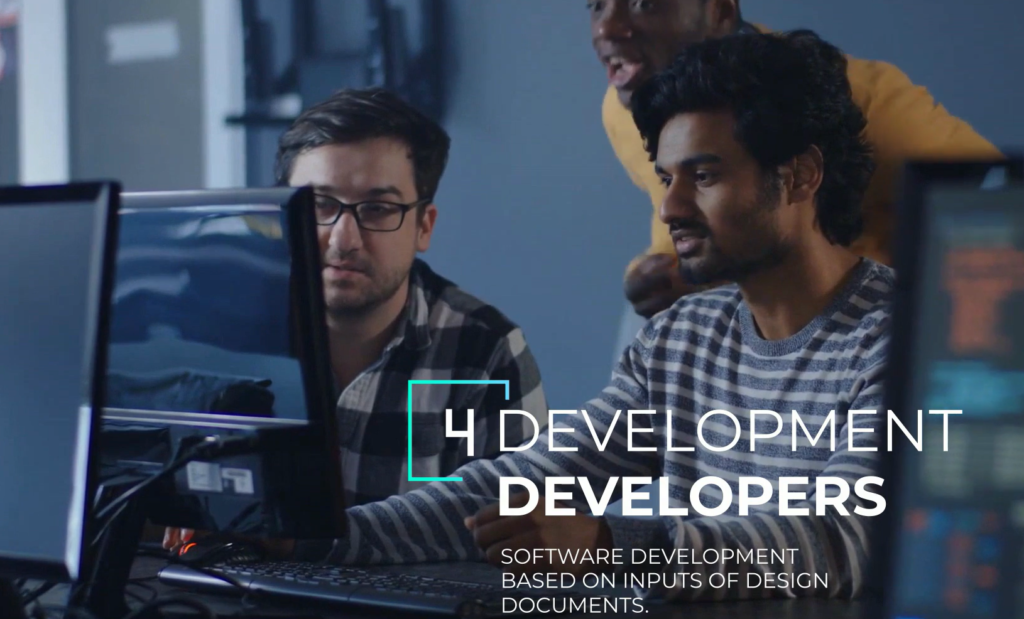
5-Software testing:-
In this phase, the software will be tested by software testers for any defense.
The software will be promoted to production only after fixing all the issues.

6-Deployment:-
At this stage, the software is deployed to the production environment so users can start using the product.
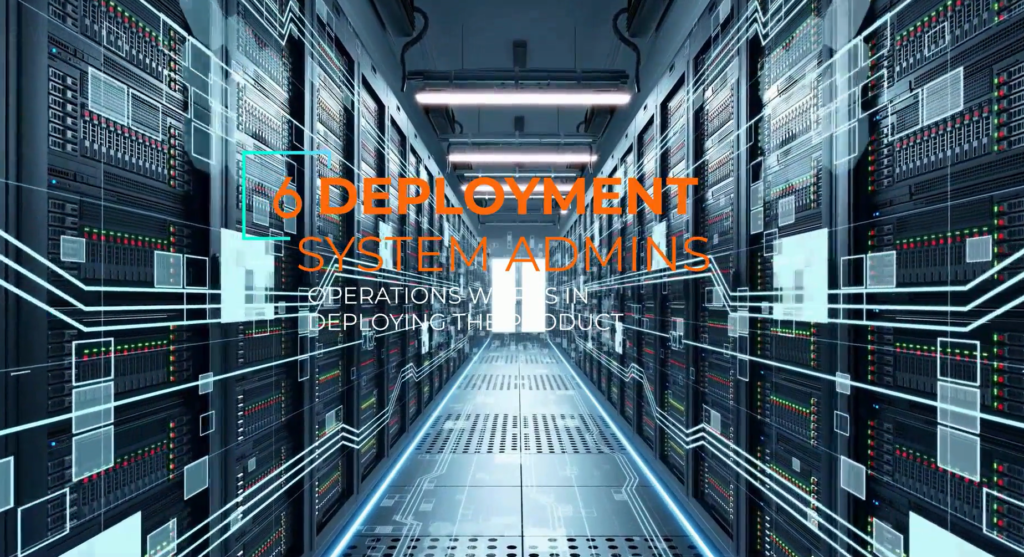
7-Operation System Admin:-It’s the responsibility of the system admin and the entire operations team to make sure the software is up and running all the time.
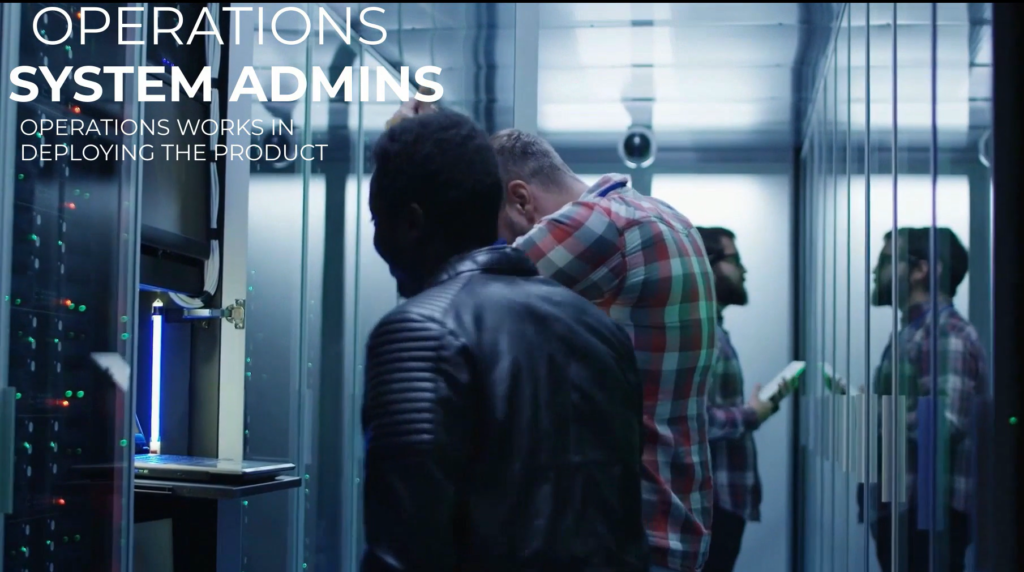
8-Maintenence Sytem Admin:-
The final phase is Maintenance. It is a balance between regular changes and uptime.
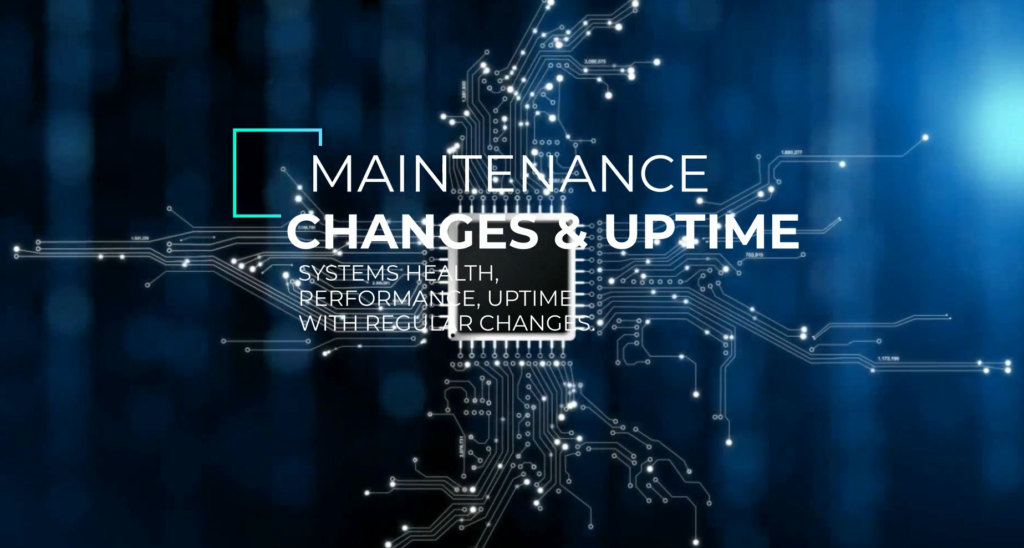
Software Development Life Cycle(SDLC) Models
Introduction:
- Software Development Life Cycle (SDLC) models are essential frameworks that guide the development process of creating high-quality software.
- These models provide a structured approach to ensure efficient communication, minimize errors, and deliver products that meet user needs.
- In this article, we’ll explore the most common SDLC models used in the industry and understand their benefits and limitations.

1. Waterfall Model:
The Waterfall model is one of the earliest SDLC models. It follows a sequential approach where each phase of development must be completed before moving on to the next one. This model is straightforward and easy to understand, making it ideal for small projects with well-defined requirements. However, it may not be suitable for projects with changing or ambiguous requirements, as it lacks flexibility for adaptation.
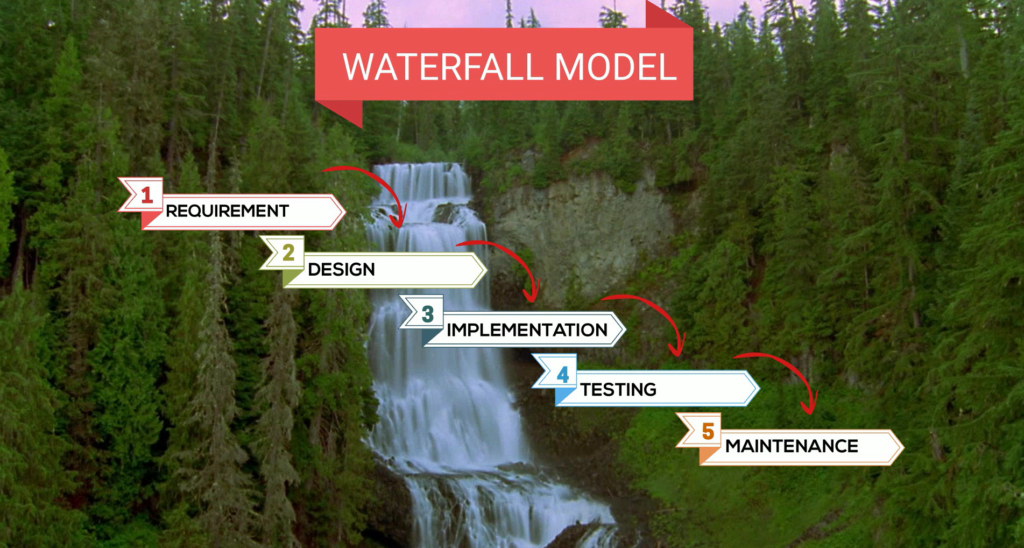
Advantages:
- Clear and easy to understand.
- Well-defined stages with distinct deliverables.
- Suitable for small projects with stable requirements.
- Documentation is comprehensive and readily available.
Disadvantages:
- Lack of flexibility to accommodate changes in requirements.
- High risk of customer dissatisfaction if the final product does not meet expectations until the end.
- Long development cycles can delay the time to market.
2. Agile Model:
Agile is a dynamic and iterative SDLC model that emphasizes collaboration and customer feedback. It breaks the development process into smaller, manageable iterations called “sprints.” Agile allows teams to respond to changes swiftly and deliver working software continuously. This model is particularly beneficial for complex projects where requirements are subject to change and for fostering a customer-centric approach.
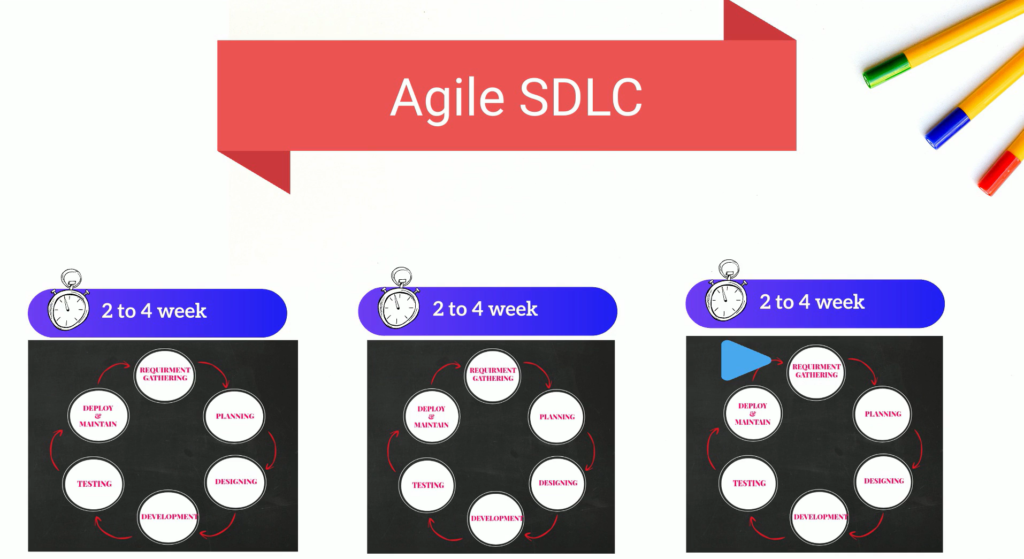
Advantages:
- High adaptability to changing requirements.
- Regular customer feedback ensures better alignment with user needs.
- Faster delivery of working software through short iterations.
- Encourages collaboration among team members.
Disadvantages:
- Continuous customer involvement may require significant time and effort.
- Lack of detailed documentation can lead to knowledge gaps in the team.
- Not suitable for projects with fixed scope and strict deadlines.
3. Spiral model:
The Spiral model combines elements of the Waterfall and iterative approaches. It focuses on risk assessment and mitigation by involving stakeholders in regular review meetings. This model is suitable for large-scale and high-risk projects, where constant monitoring and refinements are necessary. However, it can be time-consuming and may require considerable expertise to manage effectively.
4. V-Model:
The V-Model is an extension of the Waterfall model that emphasizes the importance of testing at each stage of development. For every development phase, there is a corresponding testing phase. This ensures that each step is thoroughly validated before moving forward. The V-Model helps identify and rectify defects early in the process, reducing overall development costs and enhancing the software’s reliability.
3. Incremental model:
The Incremental model divides the development process into smaller increments, each delivering a functional portion of the software. This approach allows for faster delivery of essential features, enabling early user feedback. It works well for projects with rapidly changing requirements or where partial functionality is acceptable. However, proper planning and integration testing are critical to ensure that the increments work seamlessly together.
3. DevOps model:
DevOps is not a traditional SDLC model but rather a cultural and operational approach that emphasizes collaboration between development and operations teams. It aims to automate the software delivery process, enabling frequent and reliable releases. By fostering a culture of continuous integration and continuous deployment (CI/CD), DevOps ensures faster delivery cycles and better alignment with customer needs.
Conclusion On SDLC Model
- Choosing the right SDLC model depends on the nature of your project, its requirements, and the level of flexibility needed.
- Each model has its strengths and weaknesses, and understanding them helps you make informed decisions during the software development journey.
- By adopting the most appropriate SDLC model and fostering a culture of collaboration and adaptability, you can streamline your software development process and deliver successful products that meet and exceed user expectations
What is DevOps?
DevOps is a combination of “development” and “operations.” It is not just a buzzword; it’s a culture, a mindset, and a set of practices that bring development and operations teams together. The fundamental goal of DevOps is to bridge the gap between these traditionally siloed teams and foster a collaborative, streamlined, and efficient software development process.
In simpler terms, DevOps encourages developers and IT operations professionals to work hand in hand, breaking down barriers and improving communication. This approach enables faster, more reliable, and higher-quality software delivery, making it a game-changer in the tech world.

The Pillars of DevOps
Continuous Integration (CI)
At the core of DevOps is Continuous Integration (CI). This principle encourages developers to integrate their code into a shared repository regularly. With each integration, automated tests are run to detect any potential issues early in the development process. By doing so, CI ensures that the code is consistently validated, minimizing integration conflicts and enhancing overall code quality.
Continuous Delivery (CD)
Continuous Delivery (CD) goes beyond CI. It extends the automation process to the entire software release cycle. Once the code passes through CI and is deemed stable, it can be automatically deployed to production. This seamless and automated release process accelerates time-to-market, reduces the risk of manual errors, and ensures that new features reach users faster.
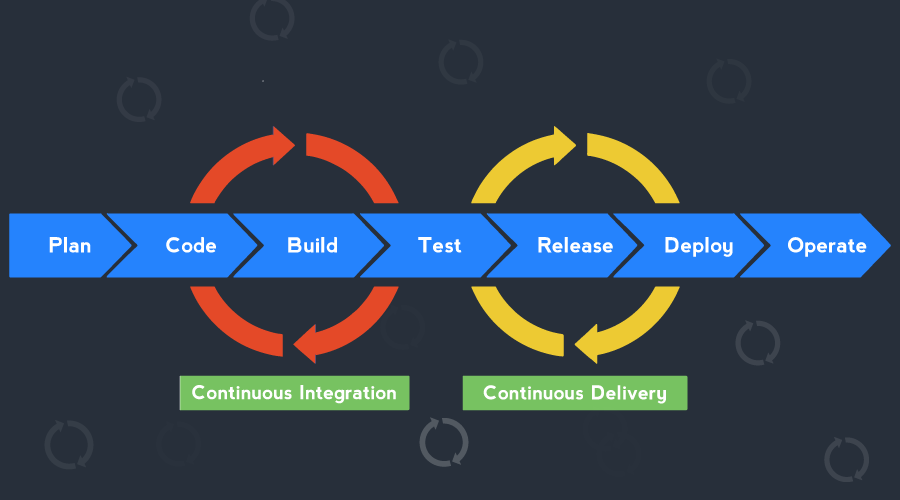
Infrastructure as Code (IaC)
In the world of DevOps, there’s this important thing called Infrastructure as Code (IaC). It treats infrastructure setup and configuration as code, meaning that infrastructure is managed using version control systems. This practice ensures consistency and reliability in the deployment process, making it easier to replicate and scale environments. IaC brings stability to the infrastructure, freeing up developers to focus on building and delivering software.
Monitoring and Feedback Loops
Real-time monitoring and feedback loops are crucial in DevOps. Continuous monitoring of applications and systems allows teams to identify performance issues and bugs promptly. This immediate feedback loop empowers development teams to respond quickly to incidents, optimize application performance, and improve user experiences based on actual usage data.
Embracing DevOps: The Benefits
Improved Collaboration and Communication
DevOps promotes a culture of collaboration, breaking down the walls between development and operations teams. By encouraging open communication and shared responsibilities, DevOps fosters a sense of unity in achieving common goals. This collaboration leads to increased efficiency, reduced friction, and enhanced teamwork within the organization.
Enhanced Speed and Time-to-Market
With automation driving the development and deployment processes, DevOps significantly reduces the time it takes to release software updates and new features. The streamlined workflow allows businesses to respond faster to market demands, stay ahead of competitors, and deliver value to users more frequently.
Heightened Software Quality
DevOps emphasizes continuous testing and validation, ensuring that code is thoroughly reviewed and tested at every stage. This rigorous approach improves software quality, reduces defects, and increases stability. As a result, users experience fewer issues and enjoy a smoother, more reliable product.
Scalability and Flexibility
Infrastructure as Code empowers organizations to scale their resources rapidly and efficiently. DevOps enables teams to adapt to changing workloads and respond to evolving user needs with ease. As a business grows, the DevOps approach allows it to scale its operations without compromising performance.
In Conclusion
DevOps is not just a passing trend; it’s a transformative philosophy that has revolutionized software development. By encouraging collaboration, automating processes, and putting the user experience at the forefront, DevOps enables organizations to stay agile, competitive, and customer-centric in the digital age.
As technology continues to advance, adopting DevOps becomes a strategic imperative for businesses looking to thrive in a fast-paced and highly competitive market. Embracing DevOps principles is not only about adopting the latest industry practices; it’s about embracing a culture of continuous improvement, collaboration, and innovation.
So, are you ready to embark on your DevOps journey? Embrace the power of DevOps today and witness the positive impact it can have on your organization’s software development process and overall success. Remember, the world of technology is ever-changing, and DevOps is your key to staying ahead of the curve.